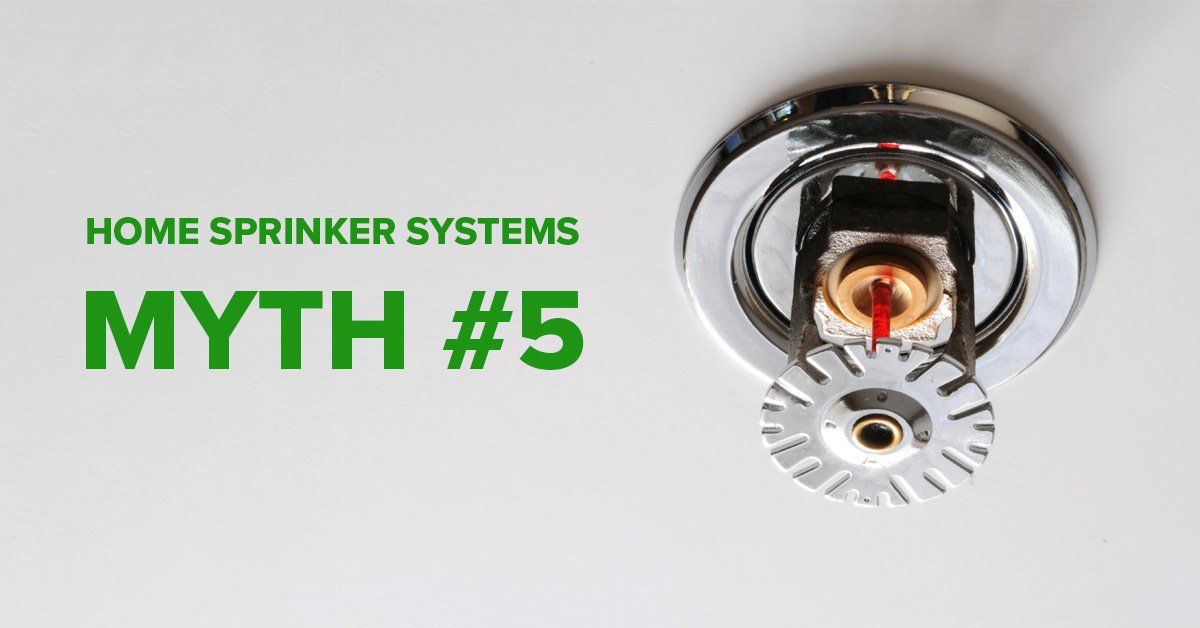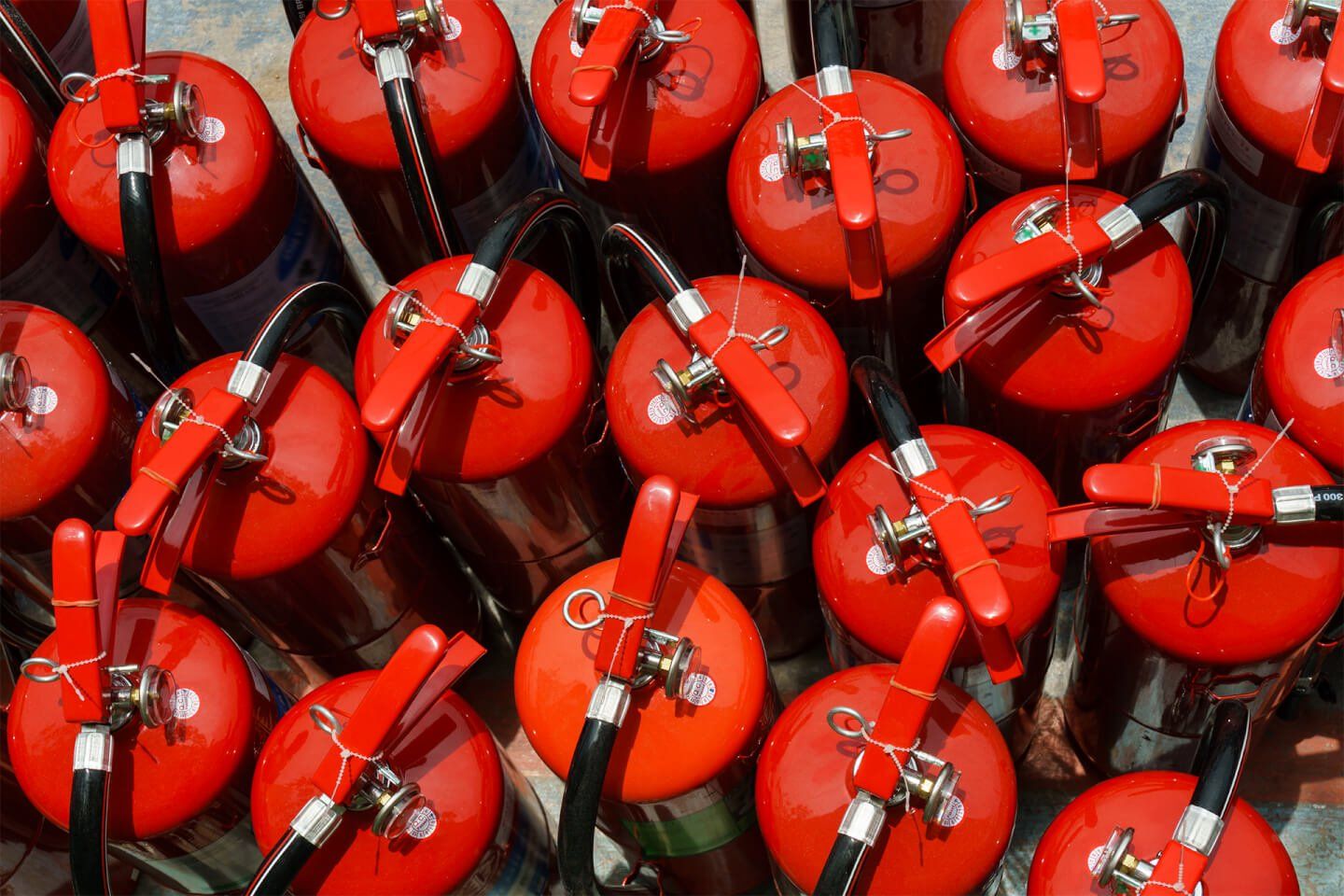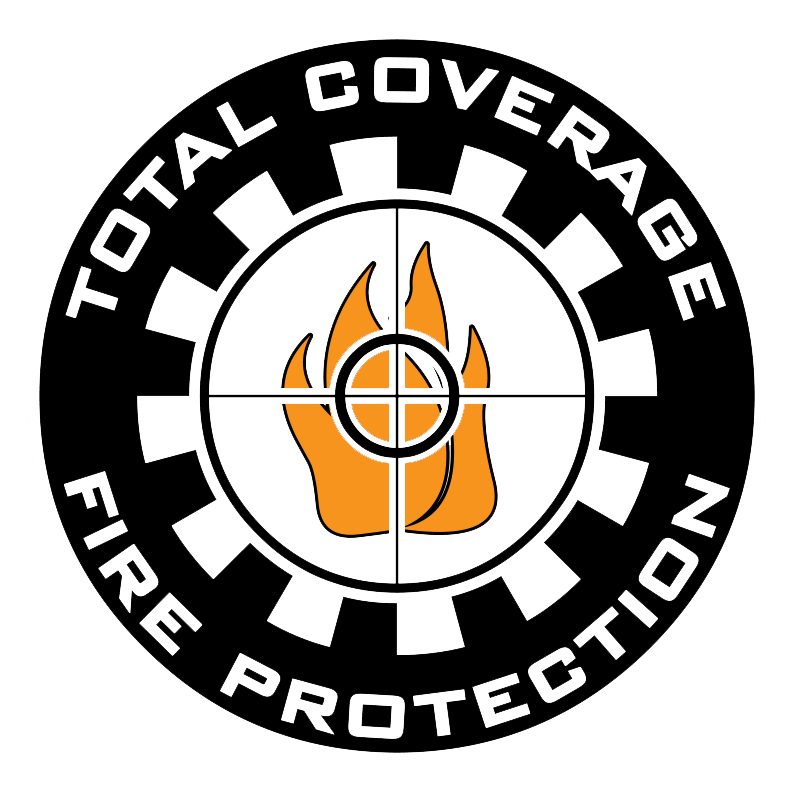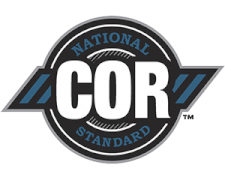Blog Layout
Myth #1 – “Smoke Alarms Offer Enough Protection”
Over the next few weeks, we’ll be covering myths that surround home sprinkler systems.
In new home builds, home sprinkler systems offer an affordable way to increase fire protection. But don’t smoke alarms offer enough protection?
FACT: Smoke alarms alert occupants to the presence of danger, but do nothing to extinguish the fire. Home fire sprinklers respond quickly to reduce heat, flames, and smoke from a fire, giving residents valuable time to get out safely. Having a working smoke alarm cuts the chances of dying in a reported fire in half. However, if you have a reported fire in your home, the risk of dying decreases by about 80% when sprinklers are present.
Fire sprinkler opponents have been using a statistic of 99.45% to illustrate the effectiveness of smoke alarms in reducing home fire deaths. This NFPA statistic estimates the likelihood of surviving a home fire when a working smoke alarm is present.
A 100% chance of dying would mean that every fire is fatal, or, roughly, 100 deaths per 100 fires. Fortunately, that is not the case. The chances of surviving a reported home fire when working smoke alarms are present is 99.45% (100 minus 0.55) vs. 98.87% (100 minus 1.13) in home fires with no working smoke alarms. The first number is barely higher than the second.
Total Coverage Fire Protection Offers Sprinkler Systems for Commercial and Residential Clients
The 99.45% vs. 98.87% statistic is based on “chances of survival” which is not the same thing as “risk of fire death” based on total number of reported fires. Chances of survival don’t have much bearing in the discussion; preventing home fire death and reducing home fire death risk is the goal.
Consider this:
Each year, over 2,300 home fire deaths occur in more than 365,000 reported structure fires. Therefore, the likelihood of surviving a home fire is approximately 99% without regard to the presence of smoke alarms or any other fire safety provisions. Does that mean 2,300 deaths are acceptable? Most people would say no.
Each year, there are an estimated 12,000 deaths due to falls in homes and an estimated 11 million fall injuries in the home. The likelihood of surviving a fall is therefore 99.9%. Does that mean 12,000 deaths are acceptable? Most people would say no.
Each year, there are an estimated 42,000 deaths due to motor vehicle crashes and an estimated 6 million reported motor vehicle crashes. The likelihood of surviving a motor vehicle crash is 99%. Does that mean 42,000 deaths are acceptable? Most people would say no.
Note: Statistics from the United States
Myths and Facts surrounding Fire Sprinklers is offered through the National Fire Protection Agency. See information about them at nfpa.org.
If you’re considering building a new home, get a free quote for a home sprinkler system and make sure you and your family and as protected as can be. Total Coverage Fire Protection offers commercial and residential sprinkler installation.
You might also like
The Fire Protection Blog

July 19, 2019
FACT: The standard design for home fire sprinklers is much simpler than the design for more traditional sprinklers like the ones used in commercial buildings. If you install home fire sprinklers, the only “inspection and maintenance” you will need is to (a) walk around your home and make sure the sprinklers are not obstructed by something that would block the water coming out, and (b) avoid turning off the main control valve, which you don’t normally operate anyway.
Send Us a Message
Thank you for contacting us.
We will get back to you as soon as possible
We will get back to you as soon as possible
Oops, there was an error sending your message.
Please try again later
Please try again later
Serving The West Coast Of Newfoundland And The Greater Northern Peninsula from Corner Brook.
© 2025
All Rights Reserved | Total Coverage Fire Protection Inc.




